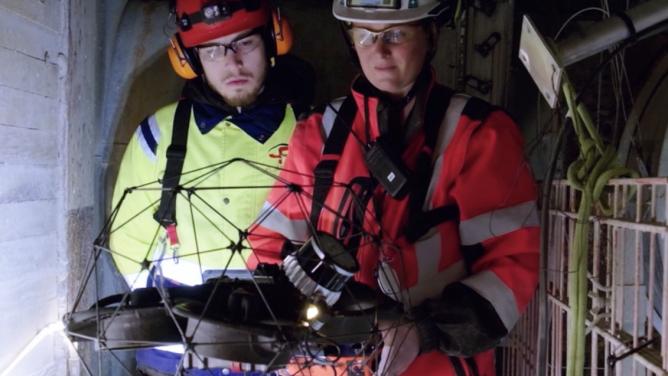The zippy-sounding acronym BIM stands for Building Information Modelling or Management. And it is pretty much the face of digital transformation in the building and infrastructure sectors today. The question isn’t if BIM will become the new normal: it’s how and how fast that will happen. The definition has been discussed extensively but, long story short, the benefits are rippling across design, construction and operation: BIM centralises information, standardises documents, improves cost and schedule management, and more. It is modernising a building’s entire lifecycle. And it is ushering in a new language and new areas of expertise that everyone in the business needs to on-board. This phase is complex and is requiring a lot of education and “demystification.” We asked a specialist in this new field – a BIM Manager – what BIM looks like in practice.
Writing the rules
The expert we spoke to about her everyday job is Daphné Dureisseix. She worked as BIM Manager on two big projects in La Défense – the Trinity and Saint-Gobain towers – and is now deputy head of I-BIM at VINCI Construction France. She told us, “The first thing you have to do is feed the contractual documents and consultation regulations into a central document, the BIM Rules. That’s the essential document that everyone involved in BIM at every point in the project will use.” In other words, the BIM Manager sets the rules, which everyone working on the shared data and models then follows.
One of the decisions at this point is what software to use. VINCI has chosen Autodesk Revit, which enables a variety of disciplines to interact, but other stakeholders might use different systems. So you need neutral data exchange formats to ensure proper interoperability – which is essential when you’re using BIM. The BIM Rules also address the level of detail in terms of “geometry,” i.e. the level of accuracy in the models. For example, does it make more sense to model specific objects based on their volume or following the manufacturer’s exact specifications? Represent square tiles as squares or not? Along the same lines, the document will prescribe the level of information for each object based on the project’s requirements. For instance whether or not a model of a partition needs to include information about its fire resistance, sound attenuation and the choice of materials.
Conducting the orchestra
Once the rules are set in stone, the BIM Manager becomes an orchestra conductor. This part of the job involves a fairly comprehensive spectrum of knowledge and a big-picture perspective of the construction sector. “You’re in touch with everyone working on the project. You have to make sure they all understand the advantages of this approach. About 80% of the job is actually education. And you’ll find very different levels of maturity among your joint contractors, so you have to make allowances for that,” Daphné continues. The BIM Manager, in other words, needs to keep this array of experts using different approaches working seamlessly and smoothly together: “A lot of the work involves checking the models that all the contributors will be using.” This pivotal role involves a keen understanding of all the processes and expertise that converge on the worksite: “When we look at the model of the structure, for example, we check the brickwork and the slabs don’t bump into each other.”
Gatekeeping
The BIM Manager is the go-to person throughout the project. “You work with the head of synthesis to make sure all the work packages are consistent from technical and geometric standpoints.” This gatekeeping role culminates when the final model is approved. And, to loop the loop, the final model needs to follow all the BIM Rules drawn up at the beginning of the project.
Between projects, BIM Managers have a choice of other jobs to keep them busy. For instance evangelising within the company – which is becoming essential as BIM tools and methods are spreading so fast. “You have to help everyone in the ecosystem build their skills,” Daphné explains. At this point, only the most complex projects are using BIM systems. But, over time, these systems will reach other buildings and construction projects. She wraps up, “Projects using BIM already account for over 30% of revenue. BIM has become a must on all major projects.”


